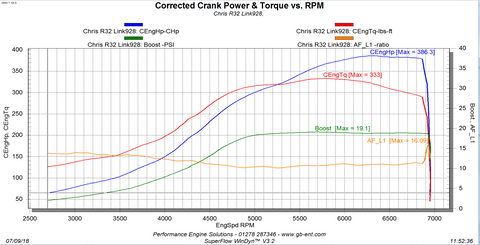
ECU vs Standalone Boost Controllers
In this blog, we are going to look at Link ECU boost control vs standalone boost controllers such as the Blitz DSBC and Apexi AVCR. What are the benefits of using ECU boost control over a standalone?
In short, the decision comes down to what ECU you have. If you are running a Link ECU and have a 3 port boost solenoid, like a Mac here, there is no reason to not let the ECU do its job. If, on the other hand, you are running a stock ECU, then perhaps a stand-alone boost controller is a good idea.
We have a video showing the benefits of an ECU controlled boost setup on a Nissan R32 Skyline with an RB20. The customer had the car originally mapped by one of our friendly tuners, so the car already had a Link PlugIn ECU and a very good map. All we needed to do was add a 3 port and remove the boost controller:
The car came to us with a Blitz DSBC installed, here is the power graph with the Blitz:

We can see that we don't really build boost until we are REALLY far along the rev range, and we don't really have any boost below 6500 RPM. This made the car feel very laggy and even made the customer need to change down when overtaking in 5th gear. Now here is the graph after we switched to ECU boost control and played with the boost settings:

We can see the car now makes more power and torque at the top end thanks to an increase in boost pressure, up to 19 psi (1.31 bar) but the main difference is the huge increases lower down. Take 4500 rpm, for example, we are at 12 psi 2000 rpm sooner than with the Blitz. This results in gains of 50 lbs/ft and 35 hp, making the car seem significantly faster. The boost curve, torque curve, and power curves are much smoother and much better with the Link ECU boost control.
It would be possible to get an improvement on the Blitz setup, but it's much easier and MUCH safer to let the Link manage the boost. The safety aspect is a large part of this too; remember with a standalone boost controller your ECU has no ability to turn the boost down if there is an issue. With a Link and proper strategies in place, a future issue could be avoided.
There are other benefits too, like RPM and gear dependent boost levels. This is especially useful in a high power track car that might not want the full boost in 1st and 2nd gear. Some aftermarket controllers can now do this, but again if you have a Link, why use a second piece of hardware?
Get in touch if you want to learn more about Link ECU's or if you want us to tweak your car.
